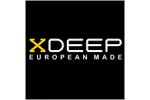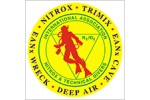
Login or create an account
CloseReturning Customer
I am a returning customer
Login or create an account
CloseRegister Account
If you already have an account with us, please login at the login form.
Ваша учётная запись создана!
Спасибо за регистрацию barracuda.eu.com!
Вы будете уведомлены по электронной почте, как только Ваш Личный Кабинет будет активирован администрацией магазина.
Если у Вас есть какие-то вопросы, свяжитесь с администратором.
Выход
Вы вышли из Вашего Личного Кабинета.
Ваша корзина покупок была сохранена. Она будет восстановлена при следующем входе в Ваш Личный Кабинет.
IANTD. История и развитие

Автор: Петр Петров
Опубликовано в журнале «Нептун XXI век»
Любая ассоциация начинается с ее отцов-основателей. Именно они, исходя из собственного опыта и знаний, составляют программы обучения, учебные пособия, стандарты. На них равняются, ими восхищаются, ведь именно они стояли у самых истоков подводного плавания. Те принципы и теории, которые сейчас являются нормой и уже проверены, они собирали по крупицам и проверяли на собственном опыте! Благодаря им — пионерам подводного плавания, мы можем теперь наслаждаться красотой подводного мира. Но мало кто знает хоть что-нибудь о них самих. Лишь их имена и название ассоциации, которое напечатано на карточке. Как они начинали, кем они были — для многих остается загадкой. А жаль. Ведь выбор, по какой системе обучаться, отчасти может облегчить именно эта информация.
Аббревиатура "IANTD" еще до недавнего времени была знакома единицам у нас в стране. Как правило это были люди, активно интересующиеся погружениями с аквалангом, к тому же владеющие как минимум английским языком. Занятие это получило популярность у нас не так давно, не было достаточного количества информации. Вот и получалось: небольшое количество инструкторов IANTD, открывших для себя эту систему из зарубежной литературы и прошедших обучение за рубежом, и круг людей, в котором они вращались.
Вопрос о том, где и как учиться нырять задает себе каждый, важно иметь достаточно информации, чтобы сделать правильный выбор. Поэтому мы и решили рассказать читателю о том, что-же это все-таки такое — IANTD.

IANTD-Международная Ассоциация Нитроксных Аквалангистов (International Assoсiation of Nitrox Divers — IAND, Inc.) была основана в 1985 году. Ее основателем стал Дик Рутковски (Dick Rutkowski), уйдя в отставку после 33 лет федеральной службы в НОАА (Национальная Океническая и Атмосферная Администрация США). За годы работы в НОАА Рутковски и его коллега, доктор Морган Уеллс (Morgan Wells), разработали методику нитроксных погружений для аквалангистов НОАА и научных погружений. Эта методика стала применяться в НОАА уже в 1970 году и прекресно себя зарекомендовала за 15 лет применения. Рутковски также был организатором и директором целого рада проектов по гипербарическим исследованиям и оказанию гипербарической помощи на протяжении порядка 20 лет своей службы в НОАА. Даже после отставки он продолжал вести обучающие программы для НОАА, ВМС США, ВВС США, NASA, коммерческих водолазных компаний и др. Он обучил тысячи профессионалов в таких областях, как рекомпрессионные камеры, газовые дыхательные смеси, физика, физиология, патофизиология и медицинские аспекты подводного плавания. Он также основал компанию Hyperbarics International. Inc. с целью обучения и консалтинга в области гипербарической медицины и газовых дыхательных смесей.
Выйдя в отставку, Рутковски решил использовать приобретенные им знания и опыт в области обгащенных кислородом смесей и гипербарической медицины и предоставить аквалангистам-любителям возможность пользоваться преимуществами нитроксных смесей при погружениях. Так и возникла IANTD. Слово «Технических» было добавлено в название лишь в 1991 году; основной же задачей IANTD в то время было обучение нитроксным погружениям и программам спортивного уровня. Таким образом IANTD стала первой в мире ассоциацией, проводящей обучение погружениям на нитроксе для аквалангистов-любителей, а Рутковски на сегодняшний день по праву считается человеком, который ввел нитрокс в мир спортивных погружений.
Нужно отметить, что мировая обществанность долго не хотела принимать концепцию погружений на нитроксе. Поскольку до этого времени эти смеси использовались исключительно военными или коммерческими водолазами и информации о них не было, сформировалось мнение, что такие погружения очень опасны. Владельцы кораблей впадли в панику при виде аквалангистов с баллонами, на которых было написано "NITROX" и отказывались брать их на борт, называя их самоубийцами и боясь, что баллон вот-вот взорвется. На протяжение нескольких лет Рутковски управлял единственным центром, который приготавливал нитроксные смеси и ему и его коллегам по IANTD пришлось потратить немало сил и проделать огромную работу для того, чтобы отношение к нитроксу изменилось в лучшую сторону. К концу 80-х пионеры подводного плавания в США уже использовали нитрокс для прохождения декомпресии, однако за пределами этой страны на смеси продолжали смотреть все также скептически. Лишь к середине 90-х другие ассоциации (но далеко не все) стали работать над программами обучения погружениям на нитроксе.

В 1991 году к Рутковски присоединился Том Маунт (Tom Mount), который разработал стандарты и процедуры для обучения техническим погружениям. Именно с этого момента IANTD стала называться IANTD, добавив термин «Технических» к своему названию. (Термин «Технические погружения» появился впервые в журнале aquaCorps, который довольно кстати объединил под этим названием погружения, выходящие за рамки спортивных в этом же 1991 году). Том, приняв предложение Рутковски, стал президентом IANTD, и с этого момента IANTD стала первой ассоциацией, проводящей обучение во всех аспектах технических погружений, включая Продвинутый Нитрокс, Глубоководные погружения, Проникновения в пещеры и затонувшие объекты, Тримиксные погружения, Ребризеры и т. д.
Для того, чтобы понять всю важность этого события, достаточно скзать, что даже в 1992 году (год спустя после введения ИАНТД технических программ) такая организация, как DAN в своей публикации Alert Diver все еще продолжала называть нитрокс небезопасным газом и предсказывала смерть и несчастные случаи от его использования, а BSAC (Британский Субакватический Клуб) посредством статьи в журнале Diver запретил своим членам использовать любые дыхательные смеси, кроме воздуха! Кроме того, как бы смешно и абсурдно это ни выглядело сегодня, но в том же 1992 году на крупнейшей ежегодной выставке производителей подводного снаряжения (DEMA) организаторы заставили IANTD на своем стенде вывесить знак, на котором были перечислены риски, связанные с использованием нитрокса!
К моменту прихода в IANTD Том Маунт уже имел 36-летний опыт в подводном плавании, включая активное участие в военных, коммерческих, исследовательских погружениях, погружениях с насыщением, разработку и курирование проектов с погружениями с насыщением а также практику и обучение рекреационным погружениям. С 1963 по 1968 год Том был владельцем центра подводного плавания и коммерческой водолазной компании, специализирующейся на установке подводных коммуникационных линий и подъемных работах. В этот же период он с еще тремя единомышленниками создали одну из первых сертификационных программ в США по погружениям в пещеры — Национальную Ассоциацию Пещерных Аквалангистов (National Association of Cave Divers — NACD). С 1968 по 1976 Маунт сотрудничал со Школой Морских и Атмосферных Наук Розенштейл при университете в Майами (RSMAS), где занимался разработкой программ, которые позволяли ученым совершать рабочие погружения с использованием гелиокса (гелиево-кислородные смеси) на глубины до 100 метров. К тому же RSMAS была наиболее активной университетской программой, вовлеченной в погружения с насыщением.
За годы своей водолазной карьеры Том на протяжении 15 лет был специалистом по гипербарическому лечению аквалангистов в RSMAS, в барокамерах которой в то время походили терапию большинство пострадавших в Южной Флориде и на Багамских островах. На его счету свыше 11000 погружений, включая более 2500 погружений в пещеры и более 1200 на затонувшие корабли, и его по праву считают одним из лучших и опытнейших аквалангистов в мире.

С момента прихода Тома и его жены Патти Маунт (Patti Mount) деятельность IANTD заметно пошла в гору. Были созданы обучающие пособия для технических программ целого ряда спортивных. Основными особенностями как этих пособий, так и философии обучения IANTD в целом стали открытость и честность в подаче информации, четкое обозначение рисков и способов их понижения. Были установлены пределы для спортивных и технических погружений. Тем не менее не было своего рода табу (например: глубже — нельзя, без каких либо объяснений). Вместо этого присутствовала исчерпывающая информация, перечисляющая «почему нельзя» и что может произойти при превышении рекомендуемых пределов.
За годы существования литература и стантарты IANTD периодически претерпевали изменения и добавления всвязи с возникновением новых видов снаряжения и результатами проведения новых исследований. Неизменными остались лишь несколько основных принципов обучения и философии IANTD: качество обучения и то значение, которое придавалось отношению аквалангиста к погружениям. Помимо учебной литературы особое внимание уделялось подготовке инструкторов, так как именно от них зависит качество обучения, которое получает студент. По степени компетентности инструктора складывается мнение и о самой ассоциации; и тот факт, что имя IANTD на сегодняшний день ассоциируется с наивысшим качеством обучения, говорит о том, что политика, выбранная основателями, себя оправдала.
За 20 лет своего существования IANTD приобрела престиж и популярность во всем мире. Во многих странах открыты представительства, и количество сертифицированных аквалангистов и инструкторов продолжает расти.









